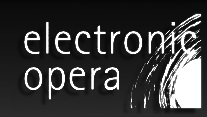Not everyone knows that composer and tenor Carl Unander-Scharin soldered together his own synthesizers as a teenager and listed to Yes.
That was before his operas such as “Tokfursten” (The King of Fools), “Hummelhonung” (Sweetness), “Loranga, Masarin och Dartanjang”, and his newly composed Einstein work “The World As I See It” for soprano and percussion, which received its world premiere yesterday. But he still likes 5/8 time. Otherwise he is the Swedish music world’s equivalent of Swedish novelist Magnus Florin: fascinated by art that collides with the natural sciences. Someone has said he is an economical composer, but if you go to the concert at Nybrokajen 11 tonight, or to the one tomorrow in Ytterjärna, you will see that this does not mean parsimonious. For instance, take the marimba in the third act, or the entire act for that matter, in which Erika Sunnegårdh lets loose almost her entire Metropolitan Opera voice. It starts when she sings the word “dead” because Unander-Scharin saves his finest melodies for the big words: death, art and religion. Sunnegårdh does something artful with her right eyebrow and becomes a Brechtian character, but it suits her. The Einstein texts from which Unander-Scharin has made music are close to the politics of today and have a message: anti-patriotism. Sunnegårdh and Kroumata create their own 1960s-era theatre on stage with video projection, sprechgesang and Wagnerian megaphone. But I did not feel steamrollered, because Einstein is so elegant and the music is subtle. And for once nor did I wish to be steamrollered. Men dressed in black who join forces to drum on things, songs about democracy, and in the midst of it all a frosty, blonde, world-famous soprano. Absolutely not too much and not too little, and I am not making a tongue-in-cheek remark by saying so. This is really very Swedish music.
Work
The World As I See It (2006)
Publication
Expressen
Journalist
Hanna Höglund
Published
